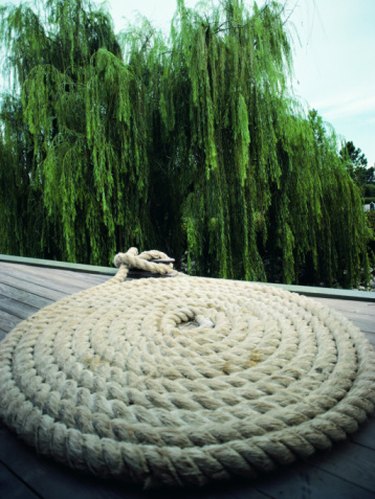
The weeping willow, with its graceful bowed shape, vigorous growth along the banks of rivers, lakes and streams, and medicinal bark, has long inspired myths and legends in every culture where it grows. It was an important tree for ancient cultures, including those of Egypt, Greece, China and the Celts, and figures in many myths and fairy tales. A wand made of willow is said to embody a number of magical qualities.
Magical Births
Video of the Day
The resilience of willows has led them to be associated with vitality, the life force and birth. According to myth, the Egyptian god Osiris was found in a clump of willows and the Greek goddess Diana was also discovered among willows. In a Biblical tale from the Old Testament, Moses floated down the Nile in a basket woven of willow branches until it caught in the reeds and he was found unharmed.
Video of the Day
Magical Uses
Druids used the branches of willows as wands, sometimes as cut or fallen from the tree in their natural state and sometimes stripped of bark and carved with runes. Witches' brooms are made with ash handles and birch twigs bound with strips of willow. Ancient Celtic legend links the willow with dreams, inspiration, visions and the muses of poetry, as well as with spells that bind or enthrall. A piece of willow under the pillow is purported to lend clarity to dreams. Willow worn as a talisman after a grievous loss speeds the process of healing.
Orpheus and Loss
Orpheus, the Greek god of music and poetry, took branches of willow, which was the symbol of Heliconian the willow muse of poetry, to the underworld to search for his lost love, Eurydice. He was able to charm Hades, lord of the underworld, by playing enchanting music on his lyre, spiriting Eurydice away while Hades was under the spell of his poetry and music. The magical lyre was given to Orpheus by Apollo and its sound box might have been carved, as was common, from willow wood. Orpheus' quest ended in tragedy and the drooping branches of the willow are often associated with grief and loss. Willows are often planted in cemeteries and the image of the willow is used for sympathy cards.
Chinese Kuan Yin
The weeping willow is native to China and figures in many legends, including stories and symbols of Kuan Yin, the goddess of compassion. The oval, elongated leaves of the willow are said to resemble tears and to stand for the great empathy Kuan Yin has with human suffering. She is frequently carved or painted holding a willow bough. Attributes of the tree equal qualities assigned to the goddess: the flexibility to bend before strong winds and spring back to form unharmed and the vigor and evergreen nature of the tree, echoing the fertility and endurance of Kuan Yin. Some depictions suggest that the willow branch was used to flick the water of blessing on followers.